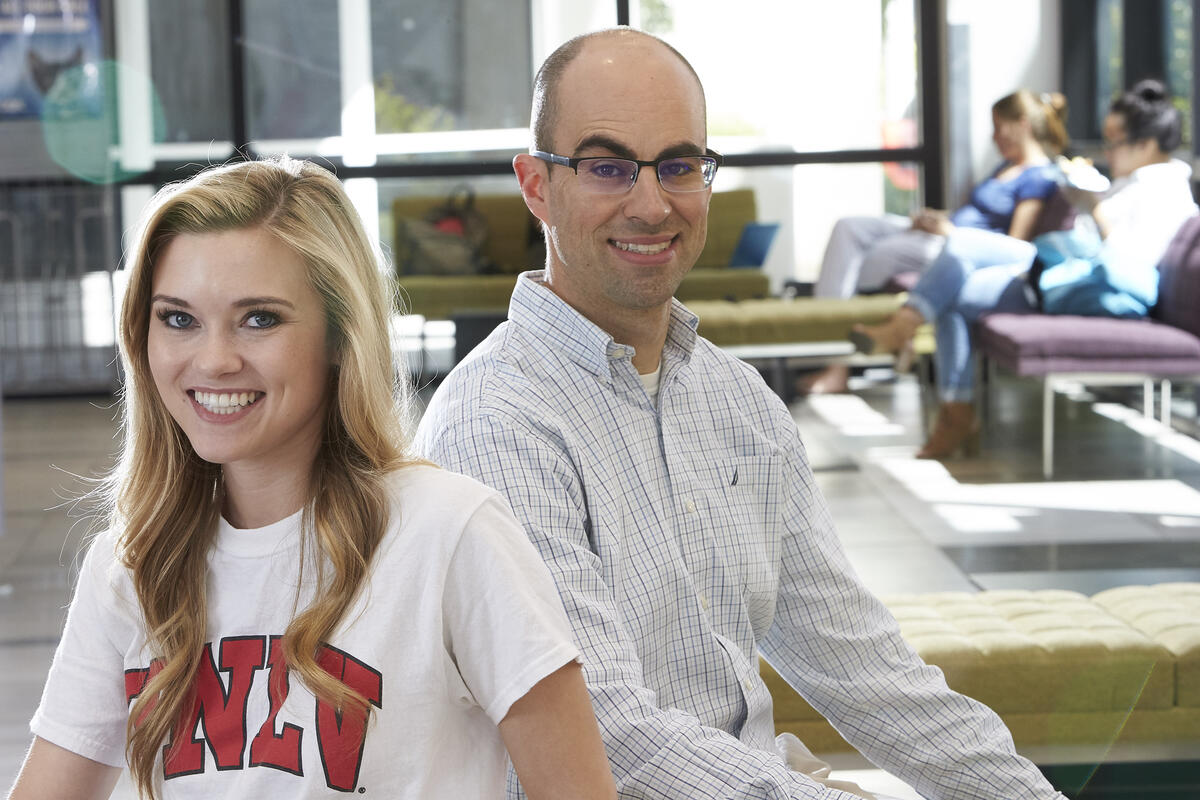When Alexis Hilts completed her honor’s thesis, she thought she had a chance to have the paper accepted for a few smaller, regional conferences geared for student researchers. She was right. She recently presented in front of peers at the Western Regional Honors Conference in Ashland, Oregon. It’s just that this particular potato wasn’t the largest one in the peck.
What she wasn’t expecting was to be accepted to the American Psychological Association’s annual confab in Washington, D.C. Hilts will be one of the youngest presenters at the APA conference in August.
“I was really excited,” Hilts said. “I had to text [graduate assistant Rachel Part] like, ‘Wait, is this what I think it means?’”
She worked with Part under the supervision of professor Matthew Bernacki in the College of Education to produce the paper, the first one for publication involving an undergrad coming out of Bernacki’s lab.
A preprofessional biology/political science double major, Hilts first came to Bernacki with an idea to study social factors that played into retaining women in STEM fields. Bernacki convinced the future medical student to expand the scope of her research to include other underrepresented groups, like minorities and first-generation students.
What they found was surprising. There was an across-the-board feeling of not belonging by underrepresented groups — which is what the literature suggested they would find. “It also confirmed that self-efficacy — your own belief that you can achieve in a course — is very important.”
But they also found that students from underrepresented backgrounds were able to thrive when their support systems, typically from classmates, were strong.
“Classmate contact was really important in retaining females, underrepresented minorities, and first-generation in STEM,” Hilts said. “Across all three underrepresented groups that was the most important factor.”
And it was that novel finding that earned a spotlight at the APA conference.
When she presents her findings to the APA’s educational psychology division, she’ll do it in front of a crowd of 110 or so scholars and professionals in the field. It’s the kind of psychological stressor that might get the heart beating a little faster. Or it would be, if Hilts didn’t have plenty of experience in front of crowds as the current Miss Las Vegas.
“She's performed really well in spaces presenting to faculty,” Bernacki said. “She's very polished, and obviously has another side of her life where she's used to big stages. That helps a lot.”
When Hilts first competed for Miss Las Vegas in 2014, she made STEM education for women part of her community platform. That year, she started teaching a summer class for a group of middle school girls, exploring a different female scientist every day and conducting experiments based on that scientist’s work.
The experience is one that stuck with her as she moved forward with her thesis.
“Working with middle schoolers taught me how they think, where their insecurities lie,” she said. “It helps with the theory behind our whole project.”



